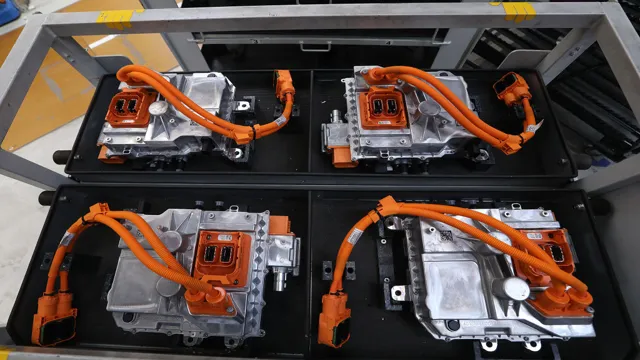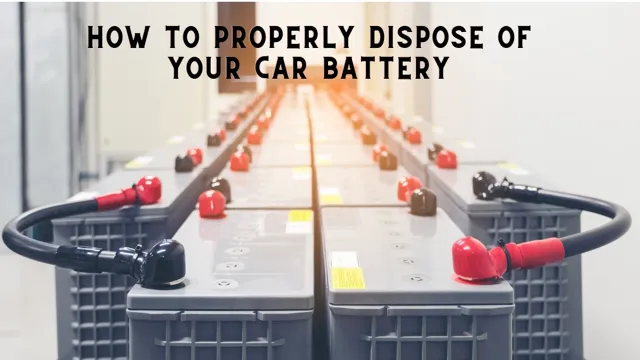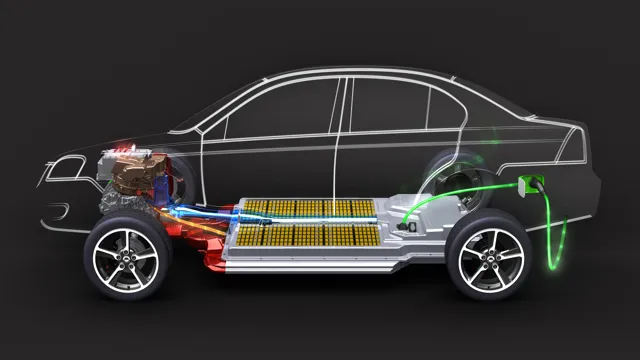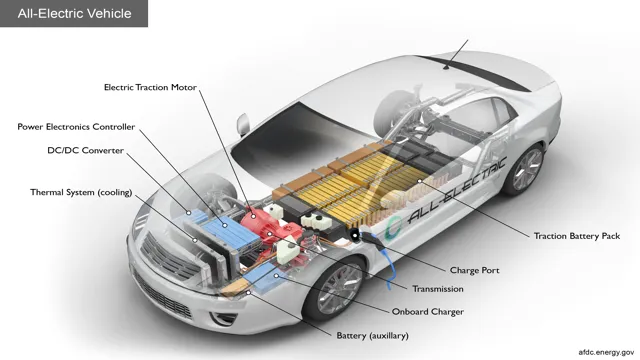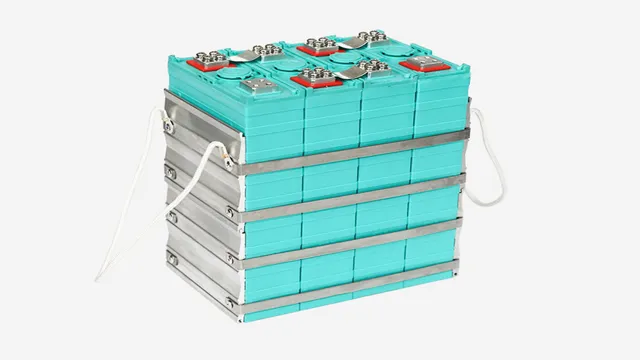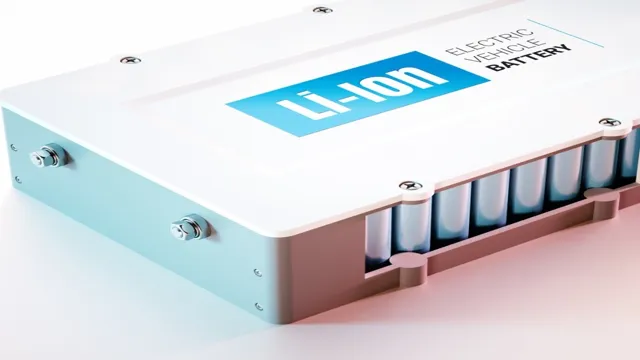Revolutionizing Automotive Industry: Step-by-Step Guide to Building Your Own Electric Car Battery
Have you ever looked at an electric car and wondered how it works? One of the most vital components of an electric car is the battery. The battery efficiently stores energy and powers the car’s electric motor, which makes the car move. Building an electric car battery is an intricate process that involves several complex steps, and it requires a lot of research and development.
A car battery typically contains several interconnected cells that convert chemical energy into electrical energy. These cells are usually arranged in packs to meet the power requirements of the electric motor and ensure a longer battery life. Designing a battery pack for a car involves considering various factors, such as weight, size, voltage, and energy density.
Building an electric car battery also involves selecting appropriate materials that can withstand high temperatures, pressure, and voltage. Lithium-ion batteries are becoming increasingly popular as they offer high energy density, low self-discharge, and long life cycle. However, the use of other materials such as nickel-cadmium and lead-acid batteries is still prevalent in some electric cars.
As electric cars become more prevalent, battery technology is improving, and the cost of building an electric car battery is decreasing. Governments worldwide are encouraging the transition towards electric cars by offering incentives to manufacturers and buyers. With advancements in battery technology, we can expect to see more efficient and affordable electric cars on the roads in the years to come.
Understanding the basics
Building an electric car battery may seem like a complex task, but the basics can be broken down into a few key elements. First, the battery cells must be chosen based on their voltage and capacity ratings, as well as their compatibility with the car’s motor and control system. Once the cells have been selected, they must be connected in a configuration that provides the desired voltage and amperage output.
This usually involves grouping cells together into modules, which are then connected in series or parallel to achieve the required voltage and capacity. The battery pack must also include a battery management system (BMS) that monitors the state of charge and temperature of the cells, and controls the charging and discharging processes. Finally, the pack must be properly packaged and insulated to ensure safety and longevity, and integrated with the rest of the car’s electrical system.
While building an electric car battery requires some technical know-how, it is becoming increasingly accessible with the proliferation of DIY conversion kits and online resources.
Battery cell technology and chemistry
When it comes to battery cell technology and chemistry, it can be overwhelming to understand the basics. But don’t worry, I’m here to break it down for you. In essence, a battery cell is made up of three key components: the anode (negative electrode), the cathode (positive electrode), and the electrolyte (solution that facilitates the flow of charged particles).
The interaction between these components is what ultimately produces the electrochemical reactions that allow the battery to store and release energy. The type of materials used for each component can vary depending on the specific type of battery and its intended use. For example, lithium-ion batteries, which are commonly used in smartphones and laptops, use lithium cobalt oxide as the cathode material, while lead-acid batteries, often found in cars, use lead dioxide.
The chemistry behind these interactions is complex, but essentially involves the transfer of electrons between the anode and cathode, resulting in a buildup of charges that can be harnessed for power. Understanding the basic components and chemistry of battery cells is a crucial foundation for delving deeper into the intricacies of battery technology.

Battery pack construction and components
When it comes to battery pack construction, there are several key components that come into play. For starters, there are the battery cells themselves, which come in different types such as lithium-ion or nickel-based. These cells are then connected together using wiring and circuit boards, which help to regulate the flow of power within the pack.
Additionally, there may be additional components such as fuses, thermistors, and voltage regulators that help to ensure the pack operates safely and efficiently. As you can see, building a battery pack can involve a lot of different parts and pieces, but each one plays an important role in the overall function of the device. So whether you’re building a pack for an electric car or for a portable device, it’s important to keep these components and their roles in mind to create a safe and reliable product for your customers.
Designing the battery pack
Building an electric car battery requires careful planning and designing of the battery pack. The battery pack is the heart of the electric vehicle, and it is crucial to ensure that it is designed to perform optimally in terms of energy density, power output, and safety. The battery pack must be built with high-quality components that are durable and reliable.
It should also be designed to meet the voltage and capacity requirements of the electric vehicle, as well as fit within the vehicle’s available space. The design process involves selecting the right type of battery cells, configuring them into a pack, and incorporating cooling systems to ensure that the battery operates within its safe operating temperature range. Further, the battery management system must be integrated into the pack to monitor and control various battery parameters, such as voltage, temperature, and current, to maintain the battery’s health and extend its service life.
Building an electric car battery requires a balance between energy density, power output, and safety, which can be achieved through careful planning and design of the battery pack.
Calculating energy requirements
When designing a battery pack for an electric vehicle, it’s important to calculate the energy requirements by considering factors such as the weight of the vehicle, desired range, and driving habits. A higher weight will require more energy to move, while a longer range will require a larger battery capacity. Additionally, aggressive driving or driving in hilly terrain will require more energy than gentle driving on flat roads.
Once the energy requirements are calculated, the battery pack can be designed to meet those needs. It’s important to choose the right type of battery chemistry for the application, as well as to consider factors such as safety, reliability, and cost. With proper planning and design, the battery pack can provide the necessary power to meet the demands of the electric vehicle, providing a clean and efficient mode of transportation.
Optimizing placement and assembly
When it comes to designing a battery pack, optimizing the placement and assembly of the batteries is essential for maximum efficiency and safety. The first step is identifying the specific requirements for the battery, such as voltage and capacity, and determining the number and size of individual cells needed. From there, the placement of the cells within the pack is critical, as it affects the overall weight distribution and temperature regulation.
To ensure optimal performance, the cells should be arranged in a way that evenly distributes weight and allows for easy heat dissipation. Additionally, the assembly of the battery pack must be done with precision to prevent any potential hazards, such as short circuits or thermal runaway. By carefully considering these factors, designers can create a battery pack that functions at its best while also prioritizing safety.
Ensuring safety and durability
When designing the battery pack, ensuring safety and durability is of the utmost importance. A well-designed battery pack will not only prevent dangerous malfunctions but also extend the battery’s lifespan. One key factor in designing a safe and durable battery is to properly manage the distribution of energy within the pack.
By carefully balancing the charge and discharging of individual cells, the pack can maintain overall stability and prevent potential explosions and overheating. Additionally, incorporating features such as thermal controls and protection circuits can further enhance the battery’s safety. It’s important to note that each battery application is unique, and the design must take into account factors such as intended use, operating environment, and necessary performance metrics.
Overall, designing a battery pack requires a careful balance of technical knowledge, creativity, and attention to detail, ultimately ensuring that safety and durability are at the forefront of the design process.
Sourcing and assembling the materials
One of the most important steps in building an electric car battery is sourcing and assembling all the necessary materials. This includes the battery cells, the electrical wiring, the enclosures, and the cooling systems. The battery cells themselves are typically made from lithium-ion technology, which offers a high energy density and long lifespan.
However, these cells can be sensitive to temperature and require cooling systems to prevent overheating. Once the cells and other materials are sourced, they must be assembled into a coherent battery pack using advanced manufacturing processes. This can include welding, braiding, and encapsulation to ensure proper electrical connections and protect against environmental factors.
Overall, building an electric car battery requires a high level of precision and attention to detail to ensure optimal performance and safety.
Selecting the right battery cells
When selecting the right battery cells, it’s important to source and assemble the materials properly. The key here is to choose high-quality battery cells that will meet the requirements of your project. You need to consider things like voltage, capacity, and discharge rate, and ensure that the cells you select are compatible with your project’s power requirements.
You may also need to consider factors like the size and weight of the cells, as well as the cost. Assembling the cells properly is also critical to ensure the safety and performance of your battery. This requires careful attention to detail when connecting the cells and securing them in place.
It’s always a good idea to consult with an expert or experienced hobbyist if you’re not sure how to properly source and assemble your battery cells. With the right research and preparation, you can assemble a powerful and efficient battery that will power your project for years to come.
Choosing and integrating electronics
When it comes to choosing and integrating electronics, sourcing and assembling the right materials is crucial for a successful project. Before you start, research and choose reputable sellers to ensure you receive high-quality components. Determine the specifications and requirements of the project to ensure compatibility between components.
When assembling the materials, organize them in a designated area to prevent misplacing important pieces. It’s also important to have the right tools on hand, including wire cutters, pliers, and a soldering iron. While the process might seem overwhelming, taking the time to properly source and assemble your electronics is key to the success of your project.
Testing and maintenance
Building an electric car battery requires rigorous testing and maintenance. Making sure that all components are functioning properly is critical to the safety and efficiency of the battery. The assembly process must follow specific guidelines and quality checks to ensure that the battery operates as designed.
After assembly, the battery must be stress tested to make sure it can withstand different driving conditions and charge levels. Maintenance is also essential to maximize the lifespan of the battery. Regular check-ups and cleaning can help prevent damage to the battery and ensure that it continues to perform at its best.
By testing and maintaining the battery, you can have confidence in your electric car’s performance and reliability. Overall, building an electric car battery requires careful attention to detail and a commitment to quality to ensure a safe and efficient driving experience.
Conducting thorough testing
When it comes to software development, testing and maintenance are critical aspects of the process that should not be overlooked. Conducting thorough testing ensures that the software is stable, reliable, and meets the desired performance standards. This involves employing different testing methodologies such as functional testing, UI testing, security testing, and performance testing, among others, to identify and address any defects or malfunctions.
While testing may add up to the development time, it eventually saves time and costs in the long term. As the adage goes, “an ounce of prevention is worth a pound of cure.” Effective testing practices provide a safety net that prevents the software from crashing, failing, or causing significant issues once it’s deployed in the market.
Therefore, creating test plans and testing early and often in the software development cycle is crucial. By doing so, developers can keep their codebase clean, prevent regressions, and quickly identify and fix bugs before they turn into costly issues. Ultimately, testing is an investment in the quality of the software, and it pays off in creating a reliable and satisfied user base.
Maintaining and replacing components
When it comes to maintaining and replacing components, testing is an essential part of ensuring that everything is functioning correctly. Regular checks and inspections are necessary to prevent unexpected failures and avoid costly downtime. It’s important to identify any potential problems early so that repairs or replacements can be made before serious damage occurs.
By conducting thorough testing, you can detect any abnormalities and take the appropriate actions to keep your system up and running smoothly. Whether it’s checking for leaks, testing electrical circuits, or examining individual parts, regular maintenance is the key to ensuring a safe and reliable system. One analogy to think of is like taking care of a car.
You can’t expect it to run without regular oil changes and maintenance checks. It’s the same with industrial systems; they must be regularly inspected and maintained to avoid breakdowns and costly repairs. Ongoing monitoring and testing are essential to keep your system running at peak performance, and it’s crucial to have a trained technician perform the necessary inspections to ensure everything is working correctly.
In the end, investing in regular maintenance and testing will save you time, money, and headaches in the long run.
Conclusion
In conclusion, building an electric car battery is like baking a cake. You need to carefully measure and mix the ingredients (the chemicals inside the battery), bake it at the right temperature (charging the battery correctly), and voila! You’ve got yourself a delicious and energy-efficient transportation solution. Just be sure not to overcook it, or you might end up with a burnt battery and a real mess on your hands.
So, let’s bake some batteries and keep our planet green!”
FAQs
What is an electric car battery made of?
Electric car batteries are typically made of lithium-ion cells, which store and release energy through a chemical reaction between lithium ions and the battery’s electrodes.
How long do electric car batteries last?
The lifespan of an electric car battery can vary depending on factors such as usage, temperature, and charging habits. However, most electric car batteries are designed to last at least 100,000 miles or more.
How long does it take to charge an electric car battery?
The charging time for an electric car battery can vary depending on factors such as the battery’s capacity, the charging station’s power output, and the type of charger being used. However, most electric cars can be fully charged in several hours using a Level 2 charger, or in less than an hour using a DC fast charger.
Can electric car batteries be recycled?
Yes, electric car batteries can be recycled to recover valuable metals such as lithium, cobalt, and nickel. Recycling helps to reduce waste and improve the sustainability of electric car production and use.

